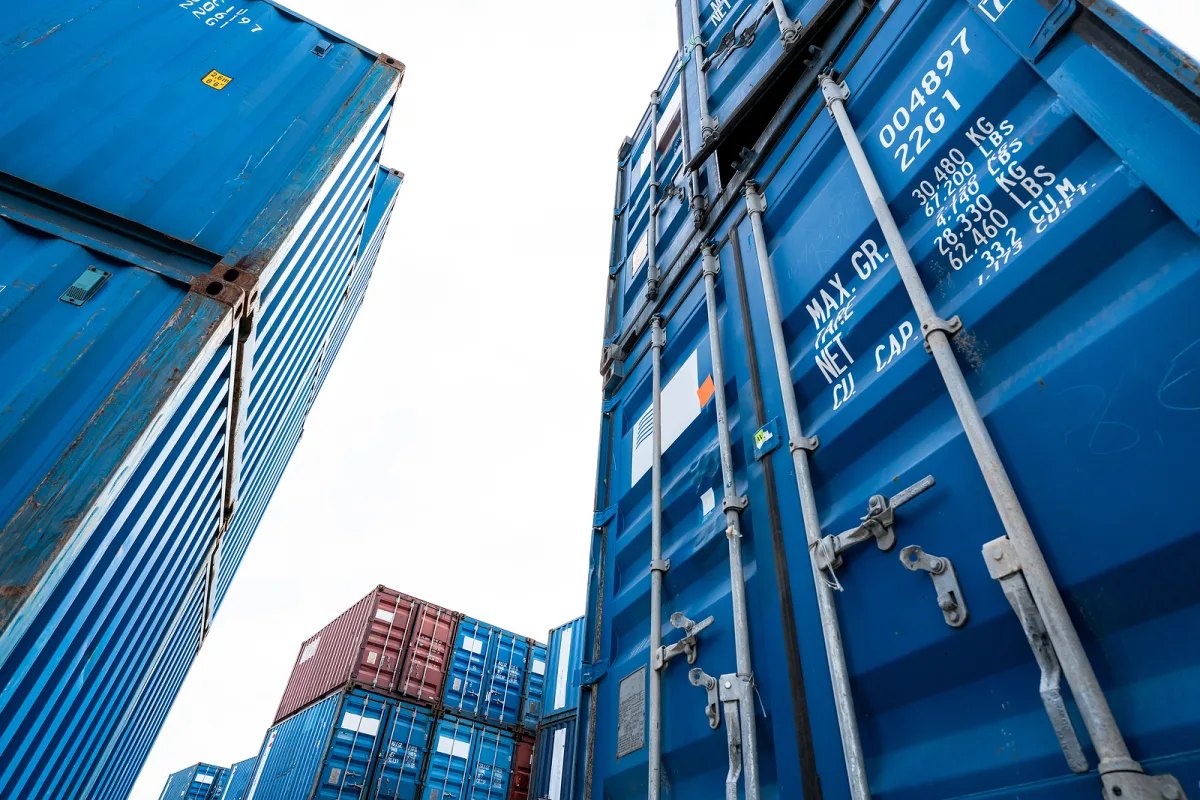In recent years, global supply chains have faced an unprecedented array of challenges, ranging from natural disasters and geopolitical conflicts such as Russia’s war on Ukraine to the Covid-19 pandemic.
These disruptions have highlighted the fragility of modern supply chains and underscored the need for businesses to rethink their approaches to sourcing, manufacturing, and distribution. Supply chains account for 50-70 per cent of a typical organisation’s operating costs and more than 90 per cent of its greenhouse gas emissions.
From raw material shortages to transportation bottlenecks, supply chain problems have had far-reaching consequences for businesses, governments, and consumers around the world. As a result, many organisations are now grappling with the complex task of redesigning their supply chain strategies to be more resilient, agile, and sustainable in the face of ongoing uncertainty.
Digitalisation offers solutions. Digitising a supply chain increases resilience, responsiveness, and competitiveness.
“There’s a myth that it takes years and enormous cost to reengineer a supply chain,” says Kostas Loukas, general manager, Enterprise, Microsoft Central and Eastern Europe. “The truth is impactful transformation can be achieved in a few weeks.”
“The cloud plays an important role here,” adds Loukas, “as it helps companies quickly eliminate silos and put data to work. Access to real-time signals from the supply chain can help leaders spot issues quickly and pre-empt disruption. What’s more, having visibility across the whole value chain helps decision makers stay a step ahead of fluctuating demand to optimise production and supply.”
According to the latest PwC Global CEO survey, almost half (43 per cent) of CEOs in Central and Eastern Europe (CEE) are considering adjusting supply chains to mitigate exposure to geopolitical conflict in the next 12 months.
Meanwhile, according to the Microsoft Digital Futures Index, businesses that spend more on digital technology and services, especially cloud computing, are more innovative and productive – twin priorities for every firm.
“In order to mitigate potential impacts from geopolitical tensions CEOs are looking for ways of building supply-chain resilience, such as reducing the concentration of risk from any one country or supplier or building diversification and redundancy into their supply chains and expanding their reserve inventory,” says Mikołaj Woźniak, risk and regulatory leader for PwC Central and Eastern Europe.
Solutions in practice
Sameday is the fastest growing Romanian courier company, using technology to create delivery solutions that drive growth for its customers and partners. The Romanian company offers an extensive range of services: home delivery, the same day delivery and delivery to over 3,200 easybox lockers nationwide.
Four years ago, Sameday was looking to scale up its business with the cloud. “Given the pace of our expansion and the rising complexity of our systems, we wouldn’t have streamlined our operations without a reliable, secure, and stable cloud solution,” says Dragoș Barbulescu, CTO at Sameday.
The company opted for Azure due to Microsoft’s strong presence in Romania and Sameday’s pre-existing reliance on compatible languages and Microsoft tools. Partnering with Sameday was Zitec, a major Microsoft partner in Romania as well as a Naspers company. Zitec helped Sameday manage the new infrastructure to implement Azure in essential services.
“The network of easybox lockers is a big market differentiator that drives growth,” explains Cristian Pena, chief systems analyst, and partner at Zitec. “That is why Sameday wanted to upgrade, monitor, and secure its lockers in real time. We had to build a platform from scratch and rely on Azure to manage everything.”
Using a simple integration with IoT Hub and Kubernetes, Zitec was able to construct a way to manage Sameday’s fleet of lockers. This makes it easy to scale up—for example, adding another 1,000 lockers the next day or dealing with a huge influx of parcels during the holiday season. Barbulescu adds, “We can also now do mass updates or control individual lockers in real time via the cloud, enabling us to even consolidate parcels from different orders into one locker. It has made things more effective.”
Sameday also uses Azure for reporting in order to monitor every parcel individual easybox lockers. “We gather all the necessary data from more than 20 applications, extract meaningful information, then report and steer decisions,” says Barbulescu.
In 2021, Sameday executed more than 400,000 deliveries a day, a big rise from about 250,000 in 2019. As a result, the company has also seen an increased income from 33 million US dollars in 2019 to 120 million US dollars in 2021. Barbulescu says, “Azure gave us the siloed, dedicated infrastructure we needed to grow our business. None of this would have been possible without its uptime and security.”
“Innovation is always a bet. Yet, we have proven that you need to innovate to keep up with a constantly evolving market. The great thing is that we feel that we have already gained a head start,” adds Barbulescu.
A holistic view
Kotsovolos – Dixons South East Europe is the largest electronics retail chain in Greece. As customers switch their purchases between e-shops and physical stores, the company decided to unify its service delivery channels to gain a better view of each interaction.
As such, it uses the Dynamics 365 customer service and sales service for a holistic view of the customer journey, Microsoft 365 for smoother collaboration and communication internally, and Azure to efficiently manage all data and create an agile supply chain. All improvements contribute to upgrading the experience for Kotsovolos customers.
“When we think about our interaction with our customers, we don’t just think about how we will convince them to buy our products, but also how we will offer them a positive experience of communicating with our company and our people,” says Yiannis Vasilakos, CEO and vice president of Kotsovolos. “But to turn every purchase into a pleasant experience, we need to support and equip our employees with the right tools.”
Using Dynamics 365 customer service and sales has also helped Kotsovolos launch new services to further improve the customer experience. By streamlining its internal operations, interactions with customers both online and in physical stores were significantly improved.
“Before, customers were not able to pick up their orders directly from the store. To date over 150,000 orders have been delivered through the ‘Pay & Collect’ service. Products are ready for pickup in just 20 minutes from ordering on the site, while the industry benchmark is two hours,” says Papidis.
Human rights
As PwC’s 2023 Digital Trends in Supply Chain Survey reveals, many challenges remain, and companies can do more to elevate their supply chains in the digital age. They will have to. From 2024, the EU’s Corporate Sustainability Due Diligence Directive is likely to force firms to analyse their supply chains and identify potential risks and impacts, such as human rights violations, environmental pollution, or corruption.
“This process will require businesses to collect and analyse data from a range of sources, including suppliers,” says Dagmar Haklova, partner at PwC Slovakia. “Due diligence will need to be integrated into a company’s policies.”
Outsourcing can be one way to handle complying with the directive, while another is implementing specific software solutions focused on Know Your Business Partner (KYBP) processes.
“Such KYBP software can allow businesses to verify their business partners and assess their risk levels,” adds Karsten Hegel, partner at PwC Slovakia. “By using KYBP solutions, companies can quickly and accurately identify potential risks in their supply chains, such as suppliers who may be engaging in unsustainable practices or who have a history of human rights violations.”
More can be done
The more than 300 executives and leaders surveyed recognise the benefits of digitising their supply chains and have made significant commitments. Compared to the 2022 survey, companies have made some gains, but pressure to consistently deliver for customers has increased the scrutiny of supply chains across industries.
Nevertheless, some 83 per cent of executives say that their supply chain technology investments have not fully delivered the expected results. Executives continue to focus more on basic, near-term priorities and challenges in their supply chains and less on actions and investments that can help transform supply chains and create long-term value.
However, an equally high 86 per cent agree their company should invest more in technology to identify, track and measure supply chain risk, which can also help with a firm’s environmental, social, governance (ESG) reporting.
Every kilometer that is travelled means burning fuel and therefore generating a certain level of emissions. For this reason, business organisations sensitive to ESG issues are imposing ever-stricter controls on emissions within their supply chain, not only to measure their level, but also to actively reduce them through better distribution management. Minimising “unnecessary kilometres” translates into a reduced environmental impact and lower costs.
“Businesses are making their supply chains more sustainable and embedding data and technology into them more than ever before. The added value here is that building supply chain resilience can mitigate risk while improving performance on ESG,” says PwC’s Mikołaj Woźniak.







